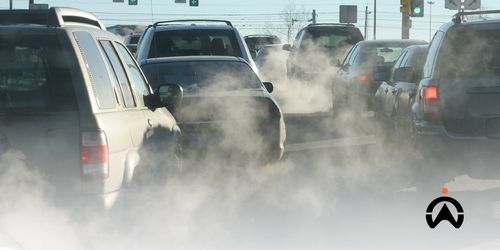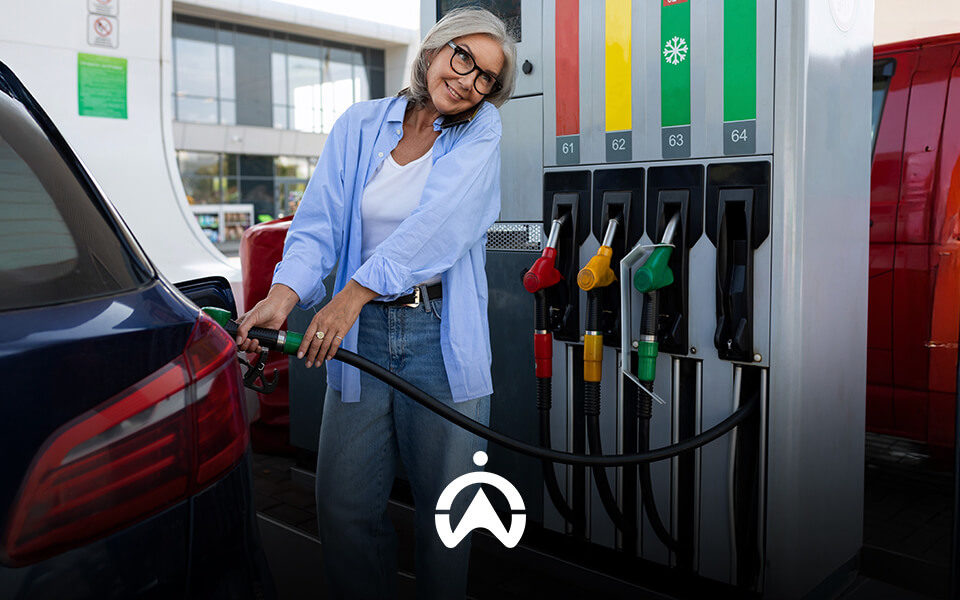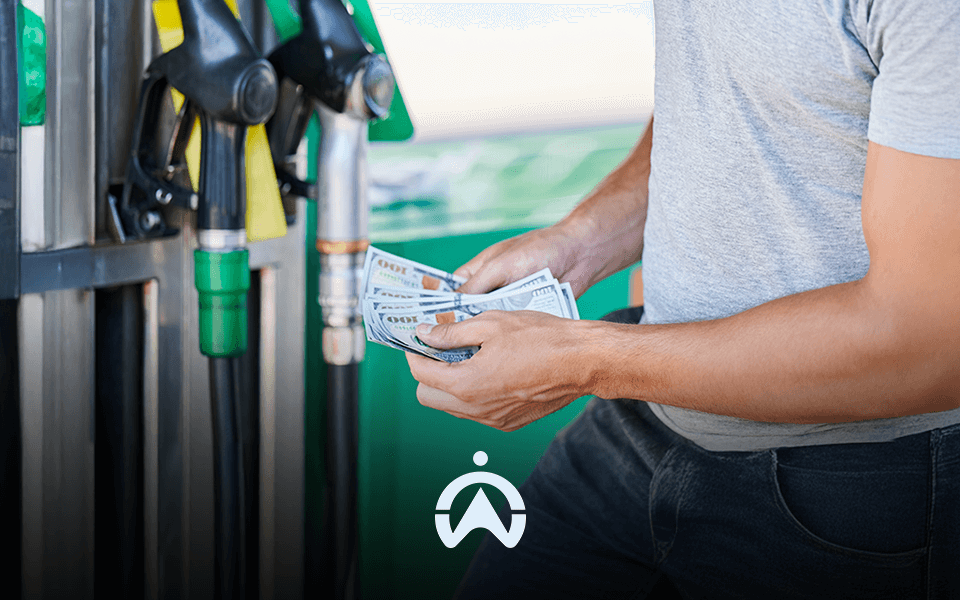How to stop vehicle idling and save fuel and business costs
Is idling bad for your car? It sure is. Now imagine if you have an entire fleet idling, it surely will put a dent in your business’s bottom line – and quickly too.
Whether drivers leave the engine running while unloading deliveries, stuck in traffic, taking a roadside phone call, warming up the interior in the winter months or cooling it down in the summer, every second of idling costs.
This is how idling vehicles in your fleet costs you, and we’ll give you ways to cut down on idling and save.
What is vehicle idling?
Idling is when a driver leaves the vehicle engine running when the vehicle is parked. Every day millions of cars and trucks idle unnecessarily, which can have many implications.
What is an example of idling?
This could be in stop-and-go traffic, drive-through lines, or loading docks. As well as running the vehicle to power heating, air conditioning, and electronic devices.
If you are a fleet manager, with multiple drivers and vehicles, you’ll want to keep tabs if they are keeping your vehicles on for aircon, offloading while the engine is on, or idling too much in traffic.
So, what is the problem with idling?
Idling for more than 10 seconds uses more fuel and produces more emissions, contributing more to smog and climate change than stopping and restarting your engine does. Idling also contributes massively to the general wear and tear of a vehicle, a lot more than you’d imagine.
Let’s dive into this a bit more.

How does an engine idle?
On a modern fuel-injected engine, the engine idle is controlled by the engine control unit (ECU) and electrically operated by a simple throttle stop, known as an idle screw. This screw stops the throttle linkage arm from completely shutting the butterfly valve that allows air to enter.
The throttle stop allows the butterfly valve to sit slightly open, which will then let a minimum amount of airflow reach the combustion chamber. This opening is just enough to allow a specific amount of airflow through to keep the engine running when there is no physical throttle input from the gas pedal.
Then there’s the idle air control valve or IAC valve, which uses sensors that communicate with the ECU to adjust airflow into the engine to achieve the desired engine speed at idle.
This is something to look at next time you think of warming up the engine.
5 reasons to stop your car from idling
- Less wear and tear on parts
An hour of idling daily adds up to around 102 998 km of engine wear over a year. And that’s just for one vehicle.
According to the American Trucking Association, such wear can increase maintenance costs by almost $2,000 per year and shorten the life of the engine.
The reason is that excessive idling puts a huge amount of stress on your car’s parts. An engine running at idling speed causes twice the wear on internal parts compared to driving at regular speeds.
How does idling harm vehicle engines and systems?
Idling can cause fuel to wash away the oil which lubricates the motor, causing friction that ages the engine prematurely. Modern engines have fuel consumption regulating sensors, and idling doesn’t warm the engine well enough to enable the sensors to respond, as the fuel-to-air ratio is too rich. Partially combusted fuel can damage engines, spark plugs, and exhaust systems.
A software platform provides driver scorecards that can help increase your vehicles’ lifespan, by decreasing bad driving habits like idling, reducing accidents, and boosting your operational efficiencies. This fuels smart business overall.
No matter the size of the vehicles in your fleet– parts and maintenance aren’t cheap. You could be using money spent on repeated repairs elsewhere, to grow your business and expand your resources.
- Limit health risks
Idling creates the same amount of pollution as when the car is moving. These pollutants have been linked to negative health implications and diseases including asthma, heart disease, chronic bronchitis, and cancer.
Some studies have even reported that acute exposures have resulted in hospitalisation due to respiratory conditions while cardiovascular health conditions result from chronic exposures to pollution.
In addition, when sitting in an idling vehicle, there is no air flow to vent the emissions. Therefore, fleet managers should also take measures to stop idling for their Drivers’ health, as they will be exposed to vehicle pollution more so than when the vehicle is moving.
- Protect the environment
According to a recent Convoy survey, reducing carbon emissions remains a critical concern. In 2022, 38% of dispatchers, drivers, and owner-operators feel pressure to reduce carbon emissions in their businesses — a 3% increase from 2021.
Research by the U.S. Environmental Protection Agency found that transportation produces 29% of U.S. greenhouse gas emissions, the highest of any sector.
For every 10 minutes your engine is off, you’ll prevent one pound of carbon dioxide from being released (carbon dioxide is the primary contributor to global warming).
One wasted litre of combusted diesel fuel throws 2,64kg of CO2 into the atmosphere.
- Save on fuel costs
An idling car uses between 0.76 to 2.65 litres of fuel an hour. An idling diesel truck burns approximately 4 litres of fuel an hour.
With SA prices for unleaded fuel topping R26.31 a litre at a point this year, that can be up to R69.70 an hour wasted.
One of the most impactful ways for trucking companies to create sustainability is by using less fuel. Taking measures to drive fewer miles and reduce idling is a way to reduce fuel consumption idling, and thus save on costs.
Cartrack’s smart dashboard on the software platform shows you how much fuel your fleet uses for unproductive idling.
- Cut business costs
As mentioned, idling increases maintenance costs for general wear and tear, as well as additional fuel expenditure.
This will have a direct impact on your bottom line, and overall business profits.

4 ways to reduce vehicle idling with a fleet platform
- Driver behaviour reports
A fleet management platform provides data reports about driver behaviour such as idling, rough driving, speeding, braking, and cornering. If excessive idling is identified, then fleet managers can implement actions to stop this from happening.
The software reports can also show you which drivers are idling longer than others, so you can notify these drivers accordingly.
- Educate and motivate your drivers
Some people believe restarting the vehicle burns more fuel than leaving it idling, and your drivers could be among them.
According to the Environmental Defense Fund, idling for 10 seconds wastes more fuel than restarting the engine.
Debunking these beliefs will encourage your drivers to switch off their engines whenever the vehicle is stationary for more than 10 seconds.
When it comes to fleet management, standard operating procedures for engine idling must be part of a training programme and safety culture.
Fleet managers should teach drivers about engine idling impacts, and how to avoid idling– to help build best practices at the onset. Ultimately, it will motivate and empower them to improve their driving.
- Optimised routes
By analysing the data provided, you can track where the most idling is taking place and why, and optimise your routes to prevent this.
Traffic congestion is another main cause of increased idle time.
You can use telematics software to optimise your drivers’ travel routes to avoid heavy traffic where possible, thus reducing idling.
Cartrack Delivery’s route optimisation feature uses GPS and algorithms to evaluate all the possible routes for drivers to take. The telematics software assesses multiple variables when determining the best routes, including current traffic, accidents, and roadblocks.
Drivers can adjust their routes in progress or before they start their trips.
- Geofencing
You can use geofencing to reduce the time your truck idles, by putting a geofence around common idling areas. When one of your vehicles enters the geofenced area, the telematics software will send you an alert to show how long the vehicle remains in the area.
Idling on a construction site as an example
It is common for heavy-duty equipment on construction sites to spend significantly long periods with the engine idling, due to the nature of the work– and more than necessary. In these cases, idling should be monitored with the help of idling insights from a fleet platform. Fuel is one of the largest expenses for heavy equipment and vehicles in the construction industry, which is more of a reason for it to be kept under control.

Save on the fuel and running of your fleet today
Idling can be an expensive problem for your business, but there’s a simple fix. While making drivers aware of more cost-effective habits goes a long way, our GPS and fleet vehicle tracking software can help limit idling.
What’s more? A customisable software dashboard helps you easily monitor other key metrics that matter to your business. Improve your fuel consumption, idle rates, driver safety, fleet running costs, productivity, vehicle usage, and more.
Contact Cartrack today to find out how our expert fleet management solutions can help, as well as the latest fleet technology trends.




